- Home
- James Grady
Three Days of the Condor
Three Days of the Condor Read online
* * *
Three Days of the Condor
Originally Published as
Six Days of the Condor
James Grady
* * *
Rosetta Books
Copyright
* * *
Three Days of the Condor
Copyright © 1970 by James Grady
Cover art and eForeword to the electronic edition copyright © 2002 by RosettaBooks, LLC
All rights reserved. No part of this book may be used or reproduced in any manner whatsoever without written permission except in the case of brief quotations embodied in critical articles and reviews.
For information address [email protected]
First electronic edition published 2002 by RosettaBooks LLC, New York.
eISBN 0-7953-0475-7
For a lot of people, including the folks,
Shirley, who helped,
and Rick, who suffered through it
Contents
eForeword
Preface
Chapter 1 Wednesday
Chapter 2 Thursday, Morning to Early Afternoon
Chapter 3 Thursday Afternoon
Chapter 4 Thursday Evening-Friday Morning
Chapter 5 Saturday
Chapter 6 Sunday
Chapter 7 Monday, Morning to MidAfternoon
Chapter 8 Late Monday
Chapter 9 Tuesday, Morning Through Early Evening
Chapter 10 Late Tuesday Night, Early Wednesday Morning
Chapter 11 Wednesday Morning
Chapter 12 Wednesday Afternoon
About The Author
About this Title
* * *
eForeword
* * *
James Grady knows the secret to writing good spy thrillers: always put extraordinary events into a believable context. It is the carefully-blended combination of imagination and verisimilitude that animates Three Days of the Condor and makes its explosive plot so spine-tingling. Although we know that nothing in the novel ever happened, Grady goes to painstaking lengths to convince us that it could have. The story was also the basis for Sydney Pollack's classic 1975 film, which featured an all-star cast including Faye Dunaway and Robert Redford.
The story is a classic "man on the run" plot, familiar to fans of such films and novels as The Fugitive, Marathon Man and The Terminator. CIA agent Ronald Malcolm, aka "the Condor," works with a handful of other agents out of a nondescript Washington brownstone. When he returns to work from an extended lunch break to find all of his coworkers shot dead, he realizes that only an oversight by the assassins has spared his life. Panicked, he contacts CIA headquarters for help. But when an attempted rendezvous with agents goes terribly awry, Malcolm realizes that no one is to be trusted. He disappears into the streets of Washington hoping to evade whoever is pursuing him long enough to unravel the mystery and save his life.
The atmosphere, as one might expect, is one of unremitting tension and paranoia. The paranoia trades on the sense that something sinister lurks unseen— but only just out of sight— beneath the surface of everyday life. To this end, Grady has rendered his beloved Washington, D.C. in vivid detail, down to the names of real bars, theatres and army-navy stores. The inner workings of the CIA and the array of tactics employed to search for the elusive Condor have been carefully researched and meticulously documented. The end result is believability, a three-dimensional background that makes the adrenalized events of the Condor's six-day (reduced to three days in the movie), high-stakes game of hide-and-seek seem all the more fateful and chilling.
RosettaBooks is the leading publisher dedicated exclusively to electronic editions of great works of fiction and non-fiction that reflect our world. RosettaBooks is a committed e-publisher, maximizing the resources of the Web in opening a fresh dimension in the reading experience. In this electronic reading environment, each RosettaBook will enhance the experience through The RosettaBooks Connection. This gateway instantly delivers to the reader the opportunity to learn more about the title, the author, the content and the context of each work, using the full resources of the Web.
To experience The RosettaBooks Connection for Three Days of the Condor:
www.RosettaBooks.com/
ThreeDaysoftheCondor
* * *
Preface
* * *
The events described in this novel are fictitious, at least to the author's best knowledge. Whether these events might take place is another question, for the structure and operations of the intelligence community are based on fact. Malcolm's branch of the CIA and the 54/12 Group do indeed exist, though perhaps no longer under the designations given to them here.
For the factual background to this story, the author is indebted to the following sources: Jack Anderson, "Washington Merry-Go-round" (various dates); Alfred W. McCoy, The Politics of Heroin in
Southeast Asia (1972); Andrew Tully, CIA: The Inside Story (1962); David Wise and Thomas B. Ross, The Invisible Government (1964) and The Espionage Establishment (1967).
…most significant triumphs come not in the secrets passed in the dark, but in patient reading, hour after hour, of highly technical periodicals. In a real sense they [the "patriotic and dedicated" CIA researchers] are America's professional students. They are unsung just as they are invaluable.
—President Lyndon B. Johnson, on swearing in Richard M. Helms as CIA director, June 30, 1966
* * *
Chapter 1
Wednesday
* * *
Four blocks behind the Library of Congress, just past Southeast A and Fourth Street (one door from the corner), is a white stucco three-story building. Nestled in among the other town houses, it would be unnoticeable if not for its color. The clean brightness stands out among the fading reds, grays, greens, and occasional off-whites. Then, too, the short black iron picket fence and the small, neatly trimmed lawn lend an aura of quiet dignity the other buildings lack. However, few people notice the building. Residents of the area have long since blended it into the familiar neighborhood. The dozens of Capitol Hill and Library of Congress workers who pass it each day don't have time to notice it, and probably wouldn't even if they had time. Located where it is, almost off "the Hill," most of the tourist hordes never come close to it. The few who do are usually looking for a policeman to direct them out of the notoriously rough neighborhood to the safety of national monuments.
If a passerby (for some strange reason) is attracted to the building and takes a closer look, his investigation would reveal very little out of the ordinary. As he stood outside the picket fence, he would probably first note a raised bronze plaque, about three feet by two feet, which proclaims the building to be the national headquarters of the American Literary Historical Society. In Washington, D.C., a city of hundreds of landmarks and headquarters for a multitude of organizations, such a building is not extraordinary. Should the passerby have an eye for architecture and design, he would be pleasantly intrigued by the ornate black wooden door flawed by a curiously large peephole. If our passerby's curiosity is not hampered by shyness, he might open the gate. He probably will not notice the slight click as the magnetic hinge moves from its resting place and breaks an electric circuit. A few short paces later, our passerby mounts the black iron steps to the stoop and rings the bell.
If, as is usually the case, Walter is drinking coffee in the small kitchen, arranging crates of books, or sweeping the floor, then the myth of security is not even flaunted. The visitor hears Mrs. Russell's harsh voice bellow "Come in!" just before she punches the buzzer on her desk releasing the electronic lock.
The first thing a visitor to the Society's headquarters notices is its extreme tidiness. As he stands in the stairwell, h
is eyes are probably level with the top of Walter's desk, a scant four inches from the edge of the well. There are never any papers on Walter's desk, but then, with a steel reinforced front, it was never meant for paper. When the visitor turns to his right and climbs out of the stairwell, he sees Mrs. Russell. Unlike Walter's work area, her desk spawns paper. It covers the top, protrudes from drawers, and hides her ancient typewriter. Behind the processed forest sits Mrs. Russell. Her gray hair is thin and usually disheveled. In any case, it is too short to be of much help to her face. A horseshoe-shaped brooch dated 1932 adorns what was once a left breast. She smokes constantly.
Strangers who get this far into the Society's headquarters (other than mailmen and delivery boys) are few in number. Those few, after being screened by Walter's stare (if he is there), deal with Mrs. Russell. If the stranger comes for business, she directs him to the proper person, provided she accepts his clearance. If the stranger is merely one of the brave and curious, she delivers a five-minute, inordinately dull lecture on the Society's background of foundation funding, its purpose of literary analysis, advancement, and achievement (referred to as "the 3 A's"), shoves pamphlets into usually less-than-eager hands, states that there is no one present who can answer further questions, suggests writing to an unspecified address for further information, and then bids a brisk "Good day." Visitors are universally stunned by this onslaught and leave meekly, probably without noticing the box on Walter's desk which took their picture or the red light and buzzer above the door which announces the opening of the gate. The visitor's disappointment would dissolve into fantasy should he learn that he had just visited a section branch office of a department in the Central Intelligence Agency's Intelligence Division.
The National Security Act of 1947 created the Central Intelligence Agency, a result of the World War II experience of being caught flat-footed at Pearl Harbor. The Agency, or the Company, as many of its employees call it, is the largest and most active entity in the far-flung American intelligence network, a network composed of eleven major agencies, around two hundred thousand persons, and annually budgeted in the billions of dollars. The CIA's activities, like those of its major counterparts— Britain's MI6, Russia's KGB, and Red China's Social Affairs Department— range through a spectrum of covert espionage, technical research, the funding of loosely linked political action groups, support to friendly governments, and direct paramilitary operations. The wide variety of activities of these agencies, coupled with their basic mission of national security in a troubled world, has made the intelligence agency one of the most important branches of government. In America, former CIA Director Allen Dulles once said, "The National Security Act of 1947… has given Intelligence a more influential position in our government than Intelligence enjoys in any other government of the world."
The main activity of the CIA is simple, painstaking research. Hundreds of researchers daily scour technical journals, domestic and foreign periodicals of all kinds, speeches, and media broadcasts. This research is divided between two of the four divisions of the CIA. The Research Division (RD) is in charge of technical intelligence, and its experts provide detailed reports of the latest scientific advances in all countries, including the United States and its allies. The Intelligence Division (ID) engages in a highly specialized form of scholastic research. About 80 percent of the information ID handles comes from "open" sources: public magazines, broadcasts, journals, and books. ID digests its data and from this fare produces three major types of reports: one type makes long-range projections dealing with areas of interest, a second is a daily review of the current world situation, and the third tries to detect gaps in CIA activities. The research gathered by both ID and RD is used by the other two divisions: Support (the administrative arm which deals with logistics, equipment, security, and communications) and Plans (all covert activities, the actual spying division).
The American Literary Historical Society, with headquarters in Washington and a small receiving office in Seattle, is a section branch of one of the smaller departments in the CIA. Because of the inexact nature of the data the department deals with, it is only loosely allied to ID, and, indeed, to CIA as a whole. The department (officially designated as Department 17, CIAID) reports are not consistently incorporated in any one of the three major research report areas. Indeed, Dr. Lappe, the very serious, very nervous head of the Society (officially titled Section 9, Department 17, CIAID), slaves over weekly, monthly, and annual reports which may not even make the corresponding report of mother Department 17. In turn, Department 17 reports often will not impress major group coordinators on the division level and thus will fail to be incorporated into any of the ID reports. C'est la vie.
The function of the Society and of Department 17 is to keep track of all espionage and related acts recorded in literature. In other words, the Department reads spy thrillers and murder mysteries. The antics and situations in thousands of volumes of mystery and mayhem are carefully detailed and analyzed in Department 17 files. Volumes dating as far back as James Fenimore Cooper have been scrutinized. Most of the company-owned volumes are kept at the Langley, Virginia, CIA central complex, but the Society headquarters maintains a library of almost three thousand volumes. At one time the Department was housed in the Christian Heurich Brewery near the State Department, but in the fall of 1961, when CIA moved to its Langley complex, the Department transferred to the Virginia suburbs. In 1970 the ever-increasing volume of pertinent literature began to create logistic and expense problems for the Department. Additionally, the Deputy Director of ID questioned the need for highly screened and, therefore, highly paid analysts. Consequently, the Department reopened its branch section in metropolitan Washington, this time conveniently close to the Library of Congress.
Because the employees were not in the central complex, they needed only to pass a cursory Secret clearance rather than the exacting Top Secret clearance required for employment at the complex. Naturally, their salaries paralleled their rating.
The analysts for the Department keep abreast of the literary field and divide their work basically by mutual consent. Each analyst has areas of expertise, areas usually defined by author. In addition to summarizing plots and methods of all the books, the analysts daily receive a series of specially "sanitized" reports from the Langley complex. The reports contain capsule descriptions of actual events with all names deleted and as few necessary details as possible. Fact and fiction are compared, and if major correlations occur, the analyst begins a further investigation with a more detailed but still sanitized report. If the correlation still appears strong, the information and reports are passed on for review to a higher classified section of the Department. Somewhere after that the decision is made as to whether the author was guessing and lucky or whether he knew more than he should. If the latter is the case, the author is definitely unlucky, for then a report is filed with the Plans Division for action. The analysts are also expected to compile lists of helpful tips for agents. These lists are forwarded to Plans Division instructors, who are always looking for new tricks.
Ronald Malcolm was supposed to be working on one of those lists that morning, but instead he sat reversed on a wooden chair, his chin resting on the scratched walnut back. It was fourteen minutes until nine o'clock, and he had been sitting there since he climbed the spiral staircase to his second-story office at 8:30, spilling hot coffee and swearing loudly all the way. The coffee was long gone and Malcolm badly wanted a second cup, but he didn't dare take his eyes off his window.
Barring illness, every morning between 8:40 and 9:00 an incredibly beautiful girl walked up Southeast A, past Malcolm's window, and into the Library of Congress. And every morning, barring illness or unavoidable work, Malcolm watched her for the brief interval it took her to pass out of view. It became a ritual, one that helped Malcolm rationalize getting out of a perfectly comfortable bed to shave and walk to work. At first lust dominated Malcolm's attitude, but this had gradually been replaced by a sense of awe that
was beyond his definition. In February he gave up even trying to think about it, and now, two months later, he merely waited and watched.
It was the first real day of spring. Early in the year there had been intervals of sunshine scattered through generally rainy days, but no real spring. Today dawned bright and stayed bright. An aroma promising cherry blossoms crept through the morning smog. Out of the corner of his eye Malcolm saw her coming, and he tipped his chair closer to the window.
The girl didn't walk up the street, she strode, moving with purpose and the pride born of modest yet firm, knowledgeable confidence. Her shiny brown hair lay across her back, sweeping past her broad shoulders to fall halfway to her slender waist. She wore no makeup, and when she wasn't wearing sunglasses one could see how her eyes, large and well-spaced, perfectly matched her straight nose, her wide mouth, her full face, her square chin. The tight brown sweater hugged her large breasts and even without a bra there was no sag. The plaid skirt revealed full thighs, almost too muscular. Her calves flowed to her ankles. Three more firm steps and she vanished from sight.
Malcolm sighed and settled back in his chair. His typewriter had a half-used sheet of paper in the carriage. He rationalized that this represented an adequate start on his morning's work. He belched loudly, picked up his empty cup, and left his little red and blue room.
When he got to the stairs, Malcolm paused. There were two coffeepots in the building, one on the main floor in the little kitchen area behind Mrs. Russell's desk and one on the third floor on the wrapping table at the back of the open stacks. Each pot had its advantages and disadvantages. The first-floor pot was larger and served the most people. Besides Mrs. Russell and ex-drill instructor Walter ("Sergeant Jennings, if you please!"), Dr. Lappe and the new accountant-librarian Heidegger had their offices downstairs, and thus in the great logistical scheme of things used that pot. The coffee was, of course, made by Mrs. Russell, whose many faults did not include poor cooking. There were two disadvantages to the first-floor pot. If Malcolm or Ray Thomas, the other analyst on the second floor, used that pot, they ran the risk of meeting Dr. Lappe. Those meetings were uncomfortable. The other disadvantage was Mrs. Russell and her smell, or, as Ray was wont to call her, Perfume Polly.

 The Short Takes
The Short Takes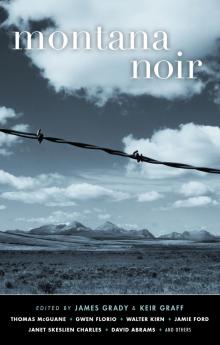 Montana Noir
Montana Noir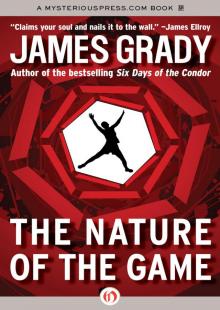 Nature of the Game
Nature of the Game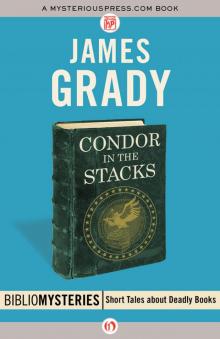 Condor in the Stacks
Condor in the Stacks This Given Sky
This Given Sky Three Days of the Condor
Three Days of the Condor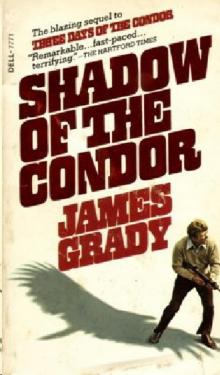 Shadow of the Condor
Shadow of the Condor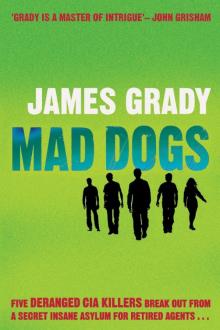 Mad Dogs
Mad Dogs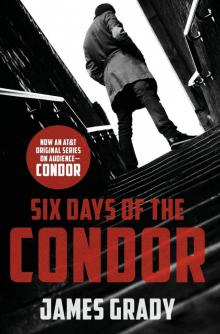 Six Days of the Condor
Six Days of the Condor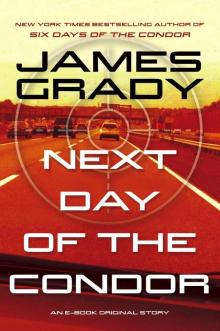 Next Day of the Condor
Next Day of the Condor